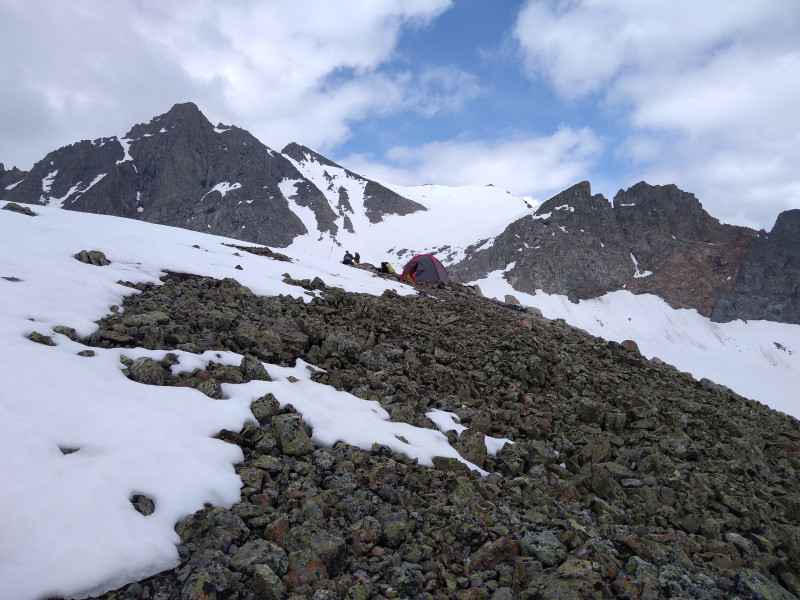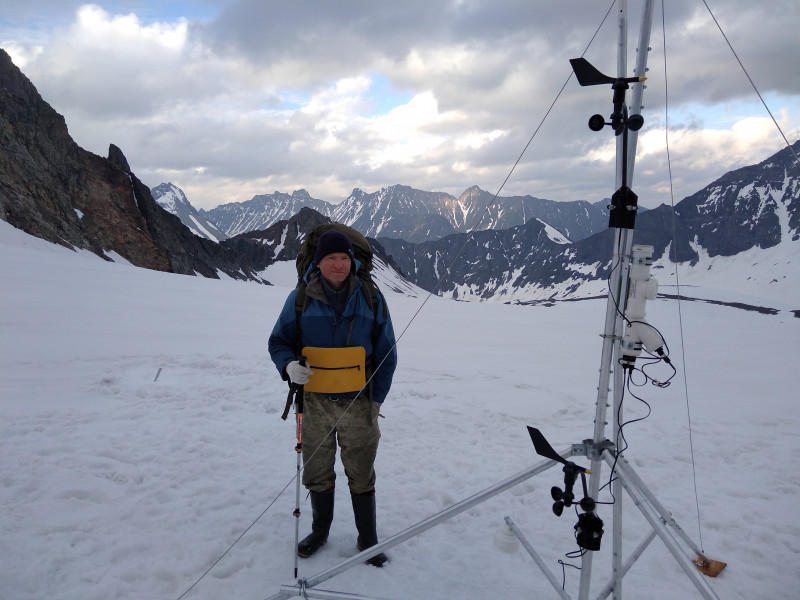The expedition within the framework of the programs “Regime and meteorology of the inland glaciers of the Kodar and the Eastern Sayan Mountains in an unstable climate” and “Paleo- and modern changes in lake systems and landscapes of East Siberia” were car
The expedition within the framework of the programs “Regime and meteorology of the inland glaciers of the Kodar and the Eastern Sayan Mountains in an unstable climate” and “Paleo- and modern changes in lake systems and landscapes of East Siberia” were carried out from June 28 to July 16, 2020.
The aim of the expedition was to continue long-term meteorological and glaciological observations with high resolution (30 min) on the Sygykta glacier (Transbaikalia, the Kodar Mountains) and the quantification of the surface heat budget of the glacier. To do this, two automatic weather stations and temperature sensors were installed in 2019 on the glacier and nearby moraine to measure a complex of meteorological and radiation (shortwave and longwave components) characteristics. During the 2020 expedition, the data from both weather stations were copied to electronic media. The additional station was installed on the surface of the glacier, allowing vertical gradient measurements (in the periglacial layer of up to 2 m) of wind speed and direction as well as air temperature and humidity.
Additionally, route survey of snow on the glacier was carried out, during which morphology of its surface was investigated. Along two transects, four plastic rods were installed to measure summer ablation rate. In the pit laid in the firn zone of the glacier (Irkutsk branch), the stratigraphy of the snow-firn cover was studied; the density was measured by layers, and 14 samples of snow, firn and ice were taken for analysis of their chemical composition.






